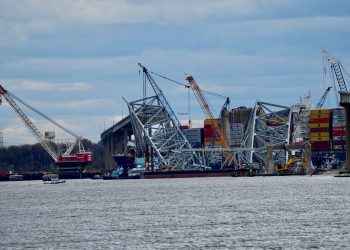The London-based company Visiongain has published a small scale LNG market forecast presenting an analysis for the market during the period 2015-2025.
Visiongain identifies LNG import terminals and liquefaction plants as small scale if their regasification or liquefaction capacity is less than 1 mtpa. Other elements of the small scale LNG market are bunkering facilities used by LNG fuelled vessels, infrastructure to supply LNG as a fuel for road vehicles and LNG satellite stations.
Historically, LNG is produced by large scale liquefaction plants and imported by regasification terminals of large receiving capacities. LNG is transported internationally with the use of large scale LNG carriers. Technological advancements, geographical considerations and new uses of LNG have influenced the market for LNG infrastructure at a smaller scale. Visiongain assesses that Capex on small scale LNG will reach $4.59bn in 2015.
Small scale regasification terminals have capabilities to receive, store and regasify LNG. They can be supplied by small and large scale liquefaction plants operating domestically or from foreign suppliers. The reasons for having these smaller terminals vary from space limitation, areas with low energy demand and offering access to geographically stranded markets. Japan is an example of a country that strategically uses small scale LNG infrastructure to serve stranded markets within the country. Building pipelines to serve certain areas is not always feasible so small scale LNG facilities can be used instead. They can be constructed within a year, offering flexibility and expanding the scale of LNG infrastructure.
Small scale liquefaction plants are used when they can offer more economically viable solutions than their large scale counterparts. On occasions where the quantity of gas reserves does not support the building of expensive large scale liquefaction plants, economic efficiencies can be optimised through utilising smaller liquefaction plants. Large scale LNG plants can take up to ten years from final investment decision to start up date. Plants under 1 mtpa can be constructed within three years. The ability to enjoy profits in a shorter time is another driver for decisions to build smaller scale plants. Other than targeting smaller gas fields, these plants are used as peak shaving systems. These systems liquefy gas, store it and regasify it when demanded. They are applied to feed the natural gas grid when gas consumption peaks. Smaller liquefaction units are also used strategically to shorten distances between the less numerous large scale plants and gas markets. A less common application of these smaller plants is to make use of the otherwise flared gas at oil extraction sites. In China such plants are also used to provide fuel for heavy vehicles at industrial sites such as coal mining trucks.
Satellite stations complement the whole LNG supply chain. They can be used for gas storage, peakshaving and intermediate points between truck and rail deliveries. Using satellite storage stations for LNG enables the practice of storing gas for use when demand is at its highest level. For instance, in winter LNG stored in satellite stations can be utilised by the local community. LNG transported from major stations is treated and stored in the necessary state for further use. Satellites are increasingly used to receive and store LNG near industrial sites, with the LNG then used as fuel.
Demand for LNG as a marine vessel fuel is driving the development of LNG import and storage facilities at a number of locations. Examples of LNG bunkering stations are the Vestbase in Kristiansund, Norway by Gasnor Shell and the Yangzte River LNG terminal in China. Using LNG for freight transportation is a challenging proposition though. The premium of converting an existing vessel to LNG propulsion is still too high to be justified. Stricter emission regulations and favourable fuel usage costs are driving LNG bunkering. Norway is the country most established in LNG bunkering but proposals for bunkering facilities in other areas are growing. LNG bunkering to ships can be offered by trucks, ships, barges and stationary installations. These operations are commonly carried out at ports or LNG plants. Truck to ship and ship to ship bunkering offers a flexible choice of location for the operation. For instance, Barents Naturgass in Norway offers truck to ship bunkering in 25 different locations depending on customer preference.
LNG is increasingly used for onshore transportation driven by environmental targets. Compared to diesel, LNG has lower carbon emissions. China and the US are the leaders in offering LNG fuelling services for vehicles. Fuel stations are built to supply solely LNG or the facilities are incorporated at traditional fuelling stations. It is common to have stations offering both compressed natural gas (CNG) and LNG named LCNG stations. For road transportation LNG is primarily used for heavy vehicles such as trucks and buses.
Learn more about the report by clicking here
Source: Visiongain


































































